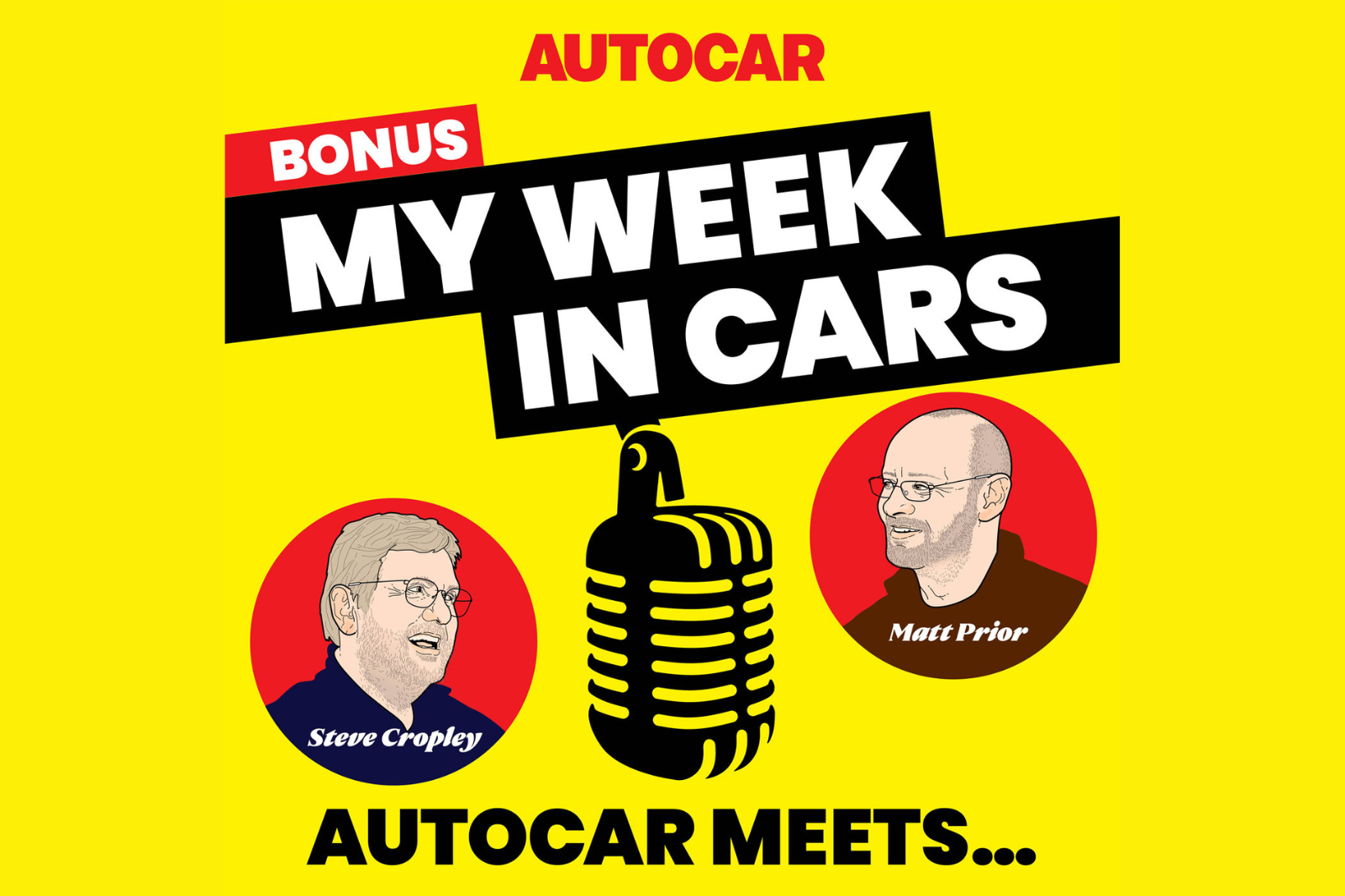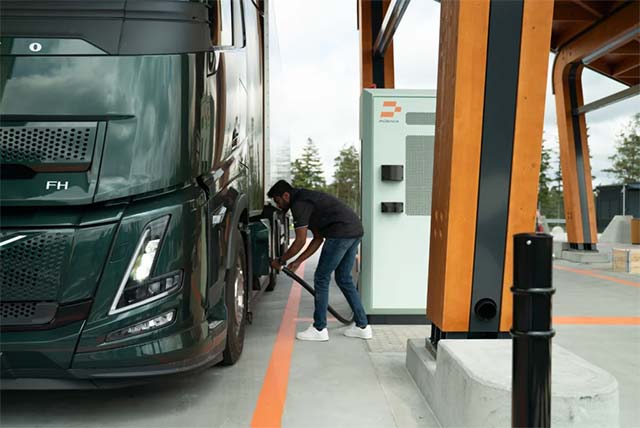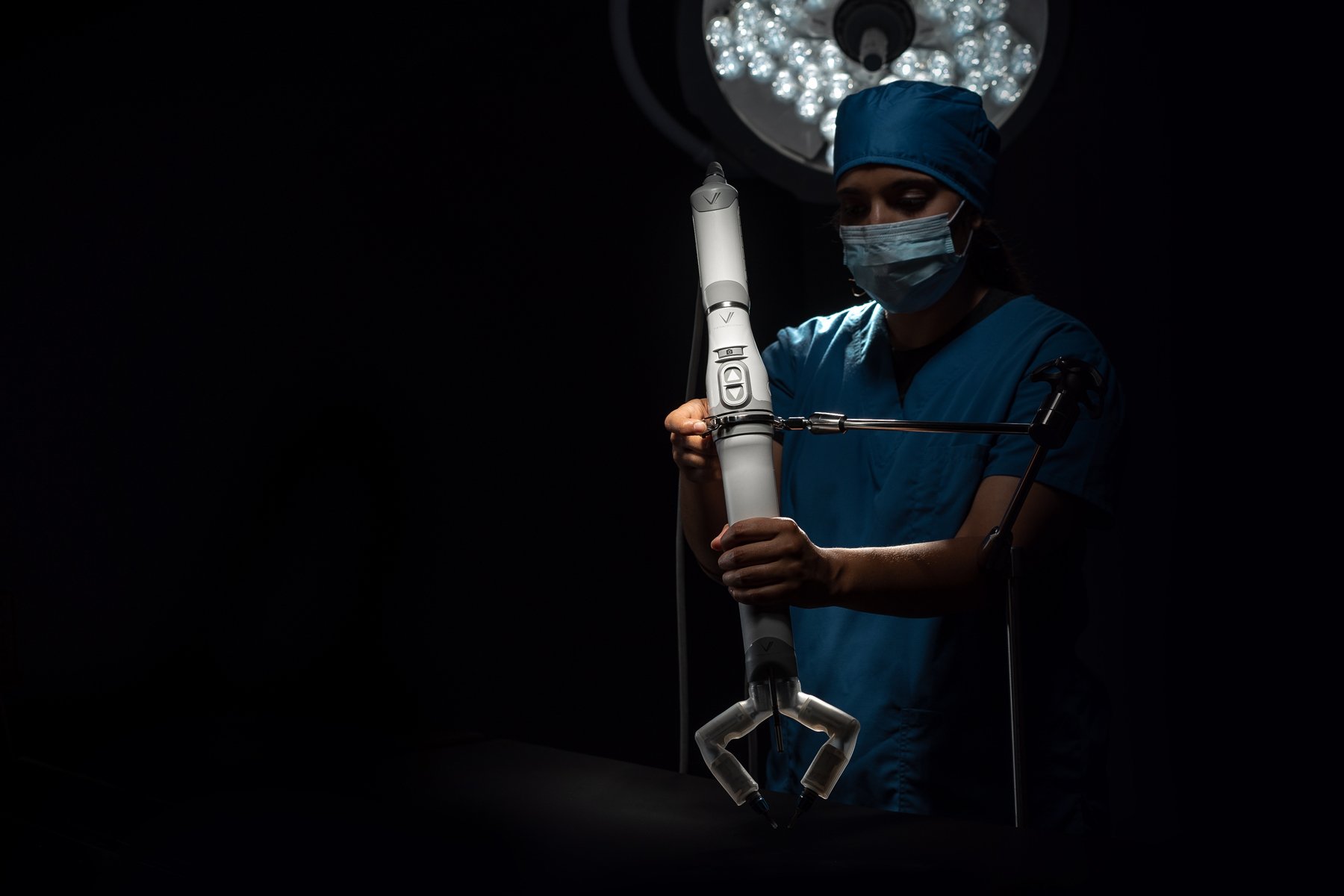Where I go, Yo-Go: exploring London in an electric golf buggy
Yo-go buggies have been launched across west London as part of a trial London’s pay-as-you-go personal transport mix has got a new player in the form of Yo-Go’s electric golf buggies Bus, bike and underground are just three of the ways you can travel around London – and now there’s another: golf cart. There are currently 10 of the yellow electric buggies, operated by Yo-Go and scurrying around Hammersmith and Fulham, as part of a trial launched in September 2024. The idea sounds bonkers, but once you’ve driven one, it soon makes sense. Each buggy can carry two people plus their luggage. They’re restricted to the prevailing speed limit of 20mph, but because they’re partially open to the elements, they feel faster. They can be driven by anyone aged between 25 and 70 who has held a UK driving licence for more than two years. The hire charge – 10p per minute for subscribers paying a £10 monthly fee, or 20p a minute for non-subscribers – includes insurance with a £250 excess. When the vehicle is parked, the hire charge falls to 5p per minute. These rates make the buggies cheaper to use than a Lime e-bike or Zipcar Flex. To drive a Yo-Go buggy you need to have registered as a user by submitting your licence and payment details, national insurance number and postcode. Approval takes 24 hours. You will find the vehicles (there are plans to increase the currently small fleet to 70) in dedicated parking bays dotted around Hammersmith and Fulham. Find one, scan the QR code on the side of it or select the vehicle on the Yo-Go app to unlock it (just like a car, each buggy has a registration number) and your hire session begins, ending only when you return the vehicle to the parking bay. Future plans include allowing users to park them where they choose, perhaps on their street, meaning that a buggy would be available for a group of households. In Hammersmith and Fulham the buggies enjoy free parking, but elsewhere parking becomes chargeable. The brains behind the Yo-Go buggies is Samuel Bailey. The automotive engineer wanted to give Londoners an alternative to the expensive electric car and found the answer in China, where the buggies are built by a company called Marshell. Each has a small 5kWh battery powering a 4kW electric motor and giving a range of 30 miles. Charging is via London’s lamp-post network or a roof-mounted solar panel, which, after a day’s sunshine, can provide a six-mile top-up. However, for all its clever electronics, a Yo-Go buggy is still a golf cart, right? In fact, the vehicle is homologated for UK roads, so it’s now classified as an L6e quadricycle. Its body has been redesigned, too, to make it more practical and weatherproof. Even so, my fear of being the laughing stock of the capital’s road users is not helped by the sight of my test buggy awaiting me at Yo-Go’s Parsons Green parking spot. The small vehicle looks only a couple of rungs up the evolutionary ladder from the rickshaws that clog London’s West End. And what city needs yet another electric ‘personal mobility’ solution? My scepticism isn’t helped by the buggy’s questionable weather protection, its basic plastic interior (although the two seats look comfortable) and its twin rear-mounted boots, which can’t be locked. At least the foot pedals marked ‘Stop’ and ‘Go’ appear to be foolproof and, save for indicators and a windscreen wiper, there are few extras to distract the inexperienced driver. Driving the buggy is just a case of ‘unlocking’ it, belting up, selecting D for drive and pressing the Go pedal. Thanks to its low weight, the buggy surges forward effortlessly; helped by fairly aggressive brake regen, it stops easily too. Independent front suspension absorbs the worst of the area’s battered roads, and although the buggy is narrow, its track is just wide enough to clear speed cushions. Its ‘chunky wheel at each corner’ design means the buggy can turn on a sixpence, while its low centre of gravity keeps it from rolling excessively in tight corners. It’s fun to drive, aided by excellent visibility. To my relief, it attracts positive reactions from drivers and pedestrians. In fact, the nimble, space-efficient and environmentally friendly buggy seems the natural choice compared with the large, heavy cars jostling for space around it. “Users love them,” says Bailey. “Each of the 10 buggies is booked out around three times a day, and we have around 5000 registered users. They include everyone from parents doing the school run and carers visiting patients to builders who take public transport and use the buggy to collect materials.” On the question of buggies one day being abandoned like e-cycles, Bailey says the fact that they’re registered to the user will prevent that. He’s confident the security tech he’s designed and installed will make them theft-proof too, although that’s what mighty JLR used to say about its security… Meanwhile, with little weather protection available, he urges users to dress appropriately. Only time wil
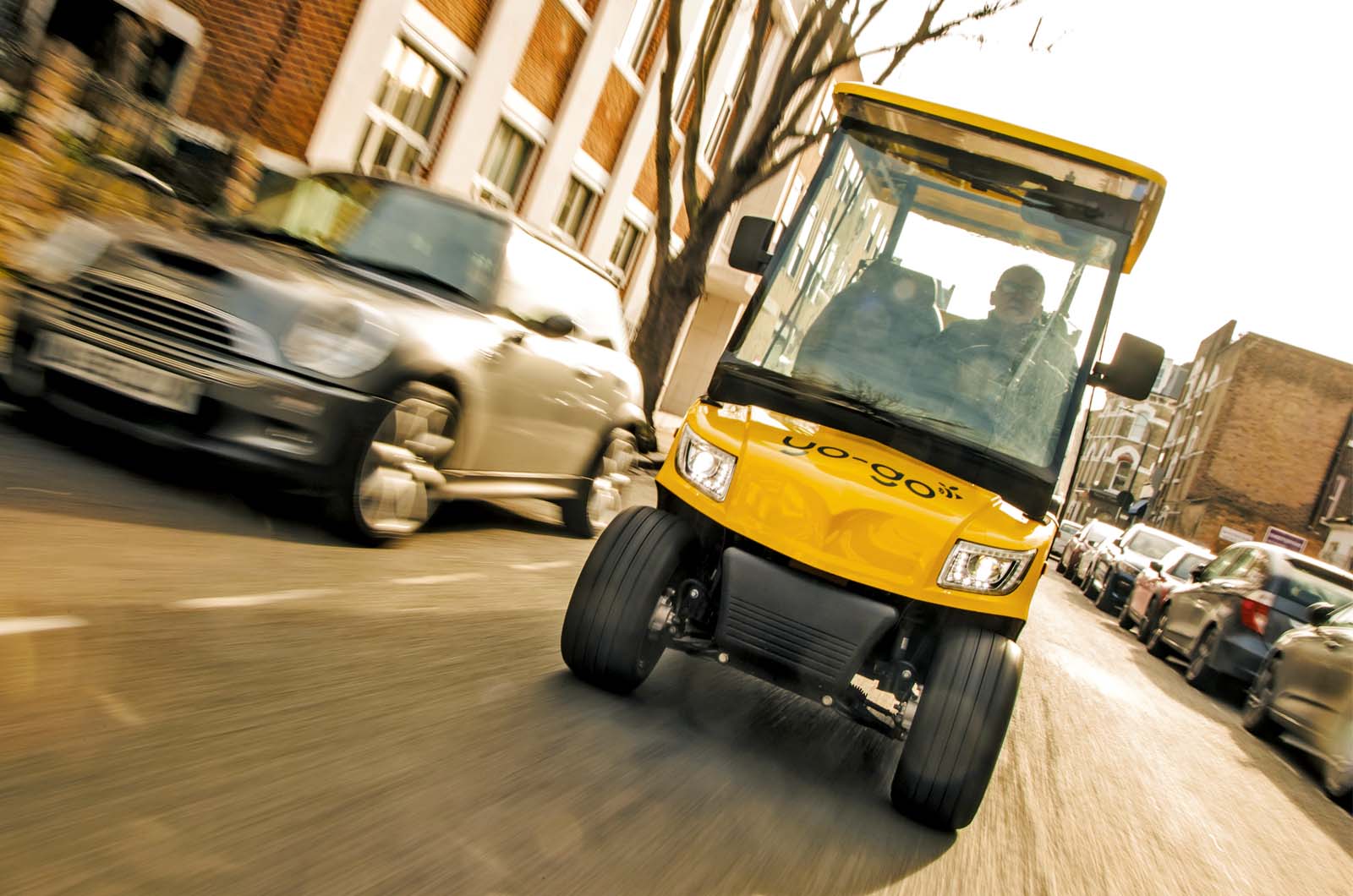

Yo-go buggies have been launched across west London as part of a trialLondon’s pay-as-you-go personal transport mix has got a new player in the form of Yo-Go’s electric golf buggies
Bus, bike and underground are just three of the ways you can travel around London – and now there’s another: golf cart.
There are currently 10 of the yellow electric buggies, operated by Yo-Go and scurrying around Hammersmith and Fulham, as part of a trial launched in September 2024. The idea sounds bonkers, but once you’ve driven one, it soon makes sense.
Each buggy can carry two people plus their luggage. They’re restricted to the prevailing speed limit of 20mph, but because they’re partially open to the elements, they feel faster. They can be driven by anyone aged between 25 and 70 who has held a UK driving licence for more than two years.
The hire charge – 10p per minute for subscribers paying a £10 monthly fee, or 20p a minute for non-subscribers – includes insurance with a £250 excess. When the vehicle is parked, the hire charge falls to 5p per minute. These rates make the buggies cheaper to use than a Lime e-bike or Zipcar Flex.
To drive a Yo-Go buggy you need to have registered as a user by submitting your licence and payment details, national insurance number and postcode. Approval takes 24 hours. You will find the vehicles (there are plans to increase the currently small fleet to 70) in dedicated parking bays dotted around Hammersmith and Fulham.
Find one, scan the QR code on the side of it or select the vehicle on the Yo-Go app to unlock it (just like a car, each buggy has a registration number) and your hire session begins, ending only when you return the vehicle to the parking bay.
Future plans include allowing users to park them where they choose, perhaps on their street, meaning that a buggy would be available for a group of households. In Hammersmith and Fulham the buggies enjoy free parking, but elsewhere parking becomes chargeable.
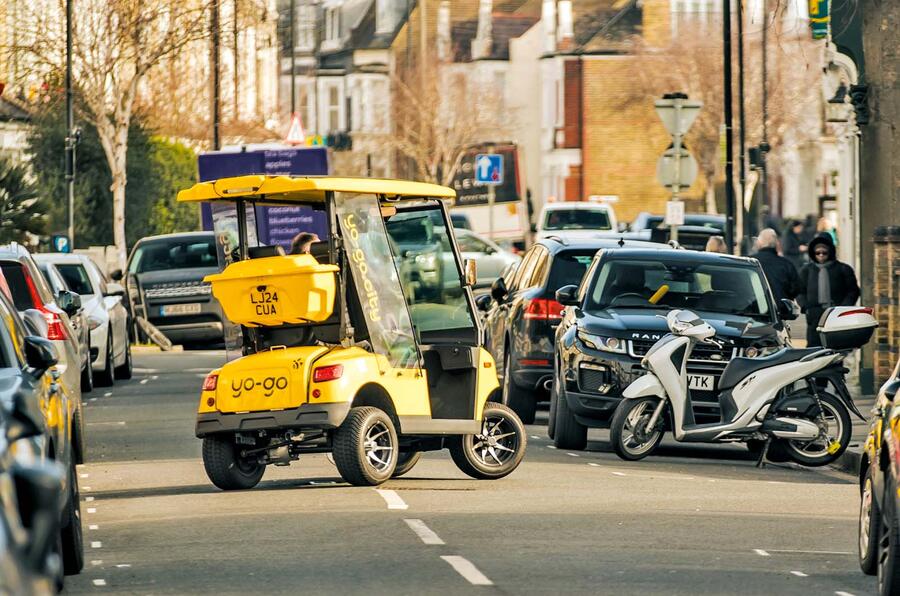
The brains behind the Yo-Go buggies is Samuel Bailey. The automotive engineer wanted to give Londoners an alternative to the expensive electric car and found the answer in China, where the buggies are built by a company called Marshell.
Each has a small 5kWh battery powering a 4kW electric motor and giving a range of 30 miles. Charging is via London’s lamp-post network or a roof-mounted solar panel, which, after a day’s sunshine, can provide a six-mile top-up.
However, for all its clever electronics, a Yo-Go buggy is still a golf cart, right? In fact, the vehicle is homologated for UK roads, so it’s now classified as an L6e quadricycle. Its body has been redesigned, too, to make it more practical and weatherproof.
Even so, my fear of being the laughing stock of the capital’s road users is not helped by the sight of my test buggy awaiting me at Yo-Go’s Parsons Green parking spot. The small vehicle looks only a couple of rungs up the evolutionary ladder from the rickshaws that clog London’s West End.
And what city needs yet another electric ‘personal mobility’ solution? My scepticism isn’t helped by the buggy’s questionable weather protection, its basic plastic interior (although the two seats look comfortable) and its twin rear-mounted boots, which can’t be locked.
At least the foot pedals marked ‘Stop’ and ‘Go’ appear to be foolproof and, save for indicators and a windscreen wiper, there are few extras to distract the inexperienced driver. Driving the buggy is just a case of ‘unlocking’ it, belting up, selecting D for drive and pressing the Go pedal.
Thanks to its low weight, the buggy surges forward effortlessly; helped by fairly aggressive brake regen, it stops easily too. Independent front suspension absorbs the worst of the area’s battered roads, and although the buggy is narrow, its track is just wide enough to clear speed cushions.
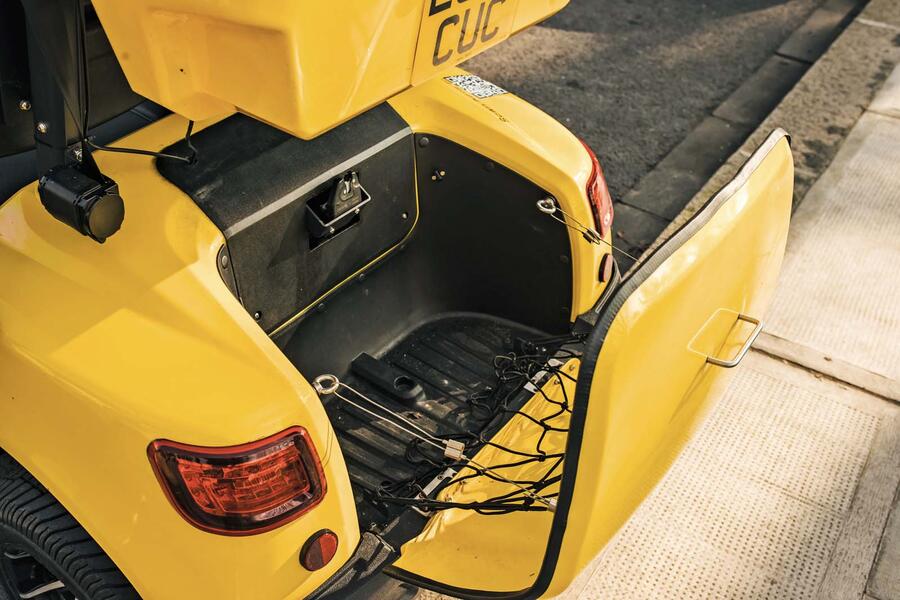
Its ‘chunky wheel at each corner’ design means the buggy can turn on a sixpence, while its low centre of gravity keeps it from rolling excessively in tight corners. It’s fun to drive, aided by excellent visibility.
To my relief, it attracts positive reactions from drivers and pedestrians. In fact, the nimble, space-efficient and environmentally friendly buggy seems the natural choice compared with the large, heavy cars jostling for space around it.
“Users love them,” says Bailey. “Each of the 10 buggies is booked out around three times a day, and we have around 5000 registered users. They include everyone from parents doing the school run and carers visiting patients to builders who take public transport and use the buggy to collect materials.”
On the question of buggies one day being abandoned like e-cycles, Bailey says the fact that they’re registered to the user will prevent that. He’s confident the security tech he’s designed and installed will make them theft-proof too, although that’s what mighty JLR used to say about its security…
Meanwhile, with little weather protection available, he urges users to dress appropriately. Only time will tell whether his Yo-Go buggies are a solution to a problem or just another piece of city clutter, but on the strength of Autocar’s drive, they deserve a chance.









